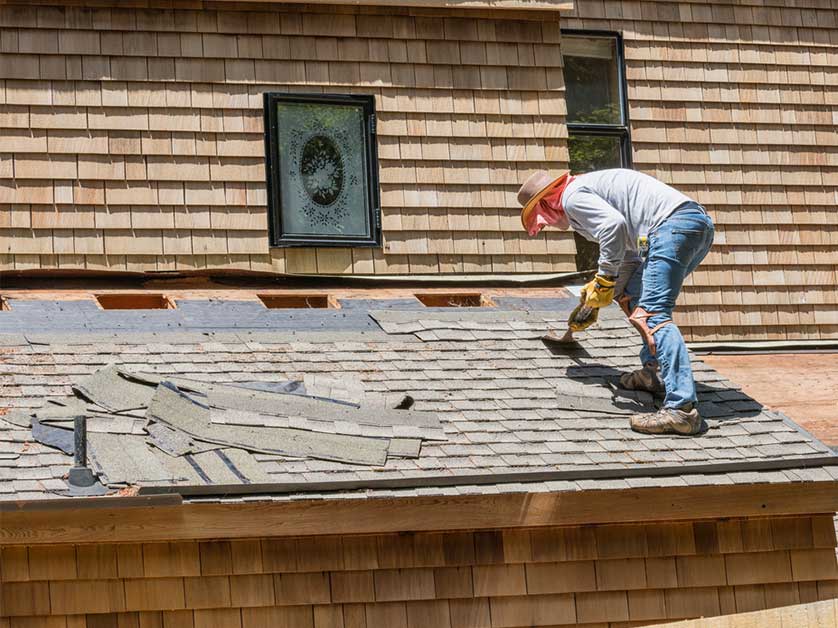A roof-over is a method of installing a new layer of roofing on top of an existing one. While this might seem like a cost-effective and quick solution, a good roofer company will advise against this practice. Continue reading to find out why roofing contractors do not recommend roof-overs.
Underlying Damage Remains Unaddressed
When a roofer performs a roof-over, it means they are laying new material on top of old shingles. What becomes problematic here is the lost opportunity to examine the roof deck, the underlying surface on which everything rests. In cases where the existing roof is torn off, contractors can inspect for rot, water damage, or inadequate structural support. Roof decking must be in prime condition to support the new roof, and roof-overs essentially cover up potential problems that can lead to costly issues down the road.
Attic Ventilation Is Compromised
An aspect of roofing that’s often overlooked by homeowners is attic ventilation. The efficiency of this ventilation can be compromised in a roof-over due to slight differences in installation requirements between materials and critical ventilation capability. Proper ventilation is crucial in maintaining the integrity of the roof and ensuring a comfortable temperature inside the home. A new metal roof nailed over old shingles, for example, can block existing vents and lead to moisture buildup.
It Adds Weight to the Whole Structure
The total weight of a roof impacts the structural integrity of a property. By adding new materials on top of old ones, a significant amount of weight is introduced. If structural issues such as rot or termite damage are present, this could lead to a dangerous situation. The home might not be able to support this added weight without proper assessment and reinforcement — steps that are naturally skipped with a roof-over.
It Affects Roof Warranty Coverage and Lifespan
Roofing materials typically come with warranties that protect against manufacturer defects and premature aging under certain conditions. When a new roof is installed over an old one, this can, in many cases, render the warranty void. Manufacturers test their products with the assumption of proper installation, and layering materials don’t meet these standards. Consequently, the lifespan of the new roof may also be reduced when old, damaged materials are not removed.
Leak Detection and Repairs Can Become Troublesome
Leak detection and repairs are more challenging with roof-overs because an additional layer masks the original pathways of the leak. When a leak occurs, water can travel between the old and new layers, making it difficult to pinpoint the main source of the leak. Furthermore, the repair process becomes more laborious and expensive since roofers must navigate through two layers of roofing materials.
Covering Up Is Not a Cure
A principal notion any professional roofer emphasizes is that laying a new roof over an existing one doesn’t make the problem disappear. An old roof may already have mildew, mold, or trapped moisture. These issues can exacerbate beneath a new roof, leading to further rot and deterioration. It’s essential to remove the old roof to address such issues adequately.
Remember that a complete tear-off ensures that any problems with the original roof are addressed and that new roofing materials are installed in optimal conditions. It’s about providing you with a secure, long-lasting and efficient roofing system.
If you need a reliable roofer, no need to look further than Jack the Roofer. We deliver quality workmanship, ensuring the safety and longevity of your roofing system. Call us at (720) 722-2255 or fill out our contact form to schedule an appointment. We serve clients in Denver, CO, and surrounding areas.

